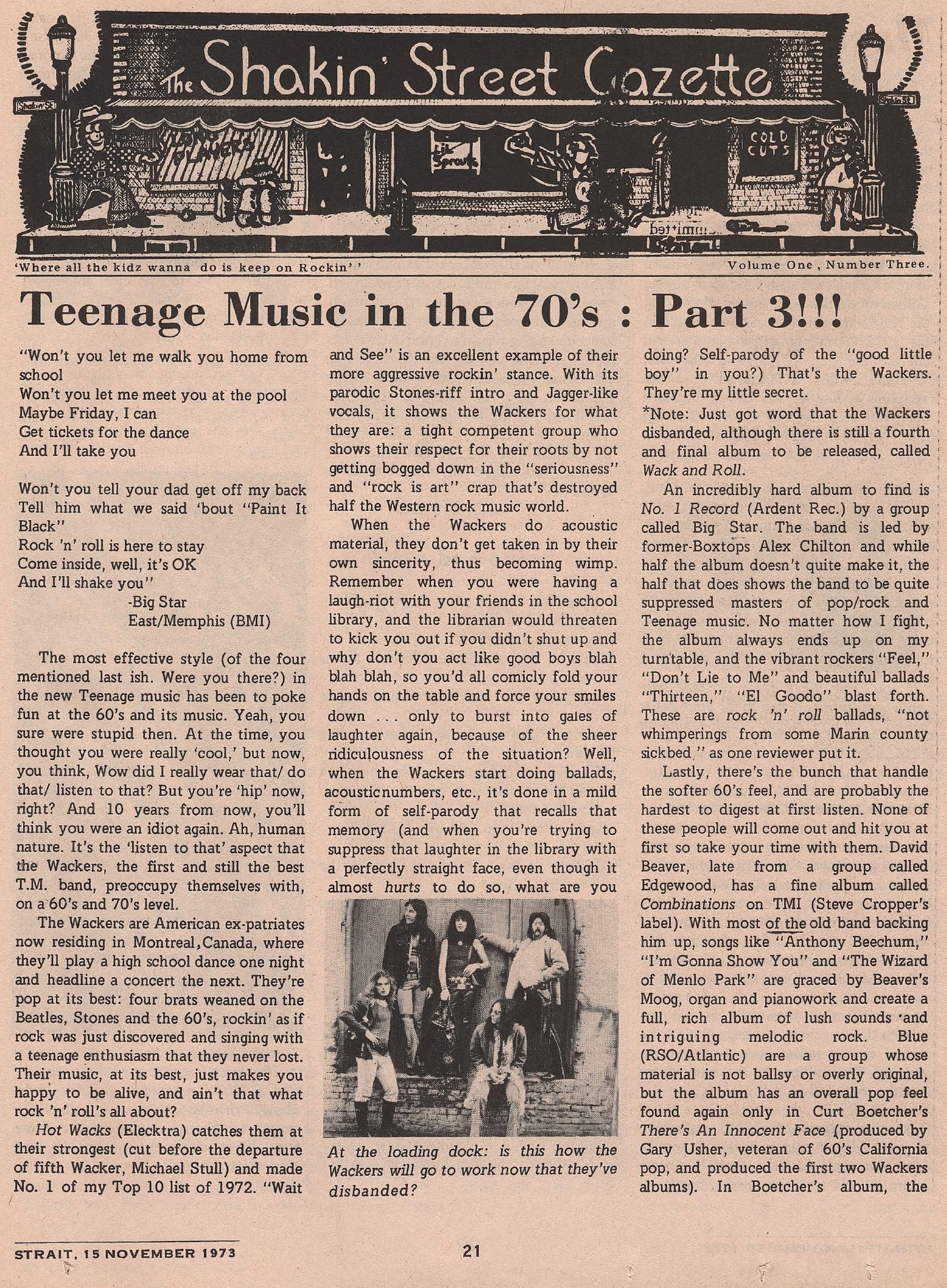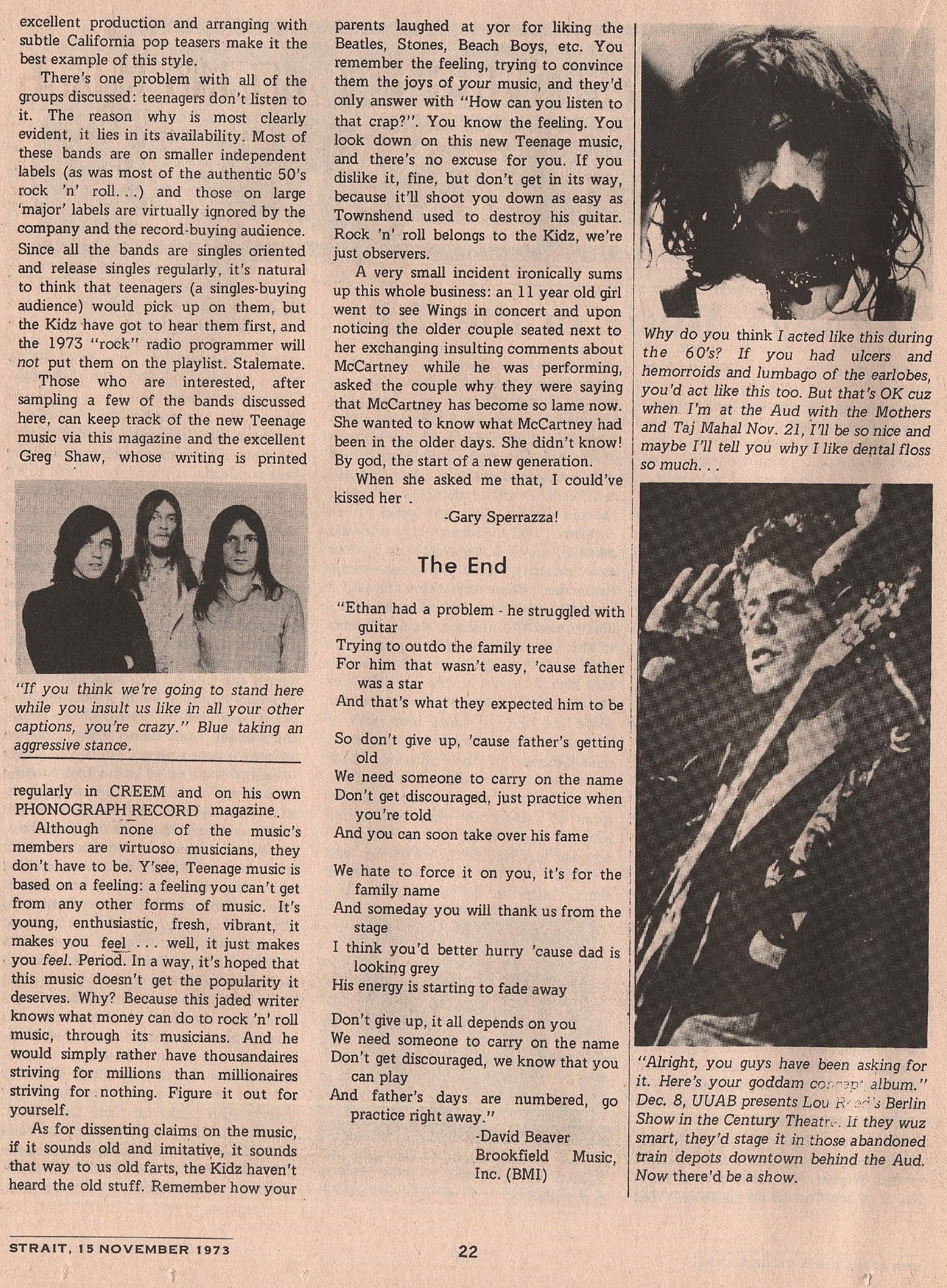Launched in October 1973, the in-house SUNY Buffalo State student paper, The Shakin’ Street Gazette, (initially part of Strait) opened with an observation and a statement of intent – a manifesto almost, from editor Gary Sperrazza: teenage music, the punk muse, was back.
Sperrazza summarised what has been lost since The Beatles asked to hold your hand and second-generation rock ’n’ rollers edged into middle-age. Things had got baggy and elastic, the sound of ever longer guitar solos . . . commerce, sell-out, musical redundancy were all in play. But . . .
‘slowly but surely, there has been a trend developing concerning a rekindling of interest in pop consciousness/Teenage music in the 70s. A whole new generation has been weaned on the Beatles and the 60’s, as the Beatles were with Berry and the 50’s . . . There’s hope’.
In Part 2 Sperrazza surveyed the group scene, Brownsville Station, The Sweet (he loved The Sweet), Aerosmith and Slade were the tub thumpers, Badfinger, Raspberries and Blue Ash proffered pastiche, while Wackers and Big Star satirised and Blue, Curt Boetcher and David Beaver (who?) got mellow.
That list is hardly inspiring, but as the paper went through its 18 editions some of those names were dropped and a good many others, now very familiar, would be added.
Part 3 opens with the lyrics of Big Star’s ‘Thirteen’, a pitch perfect introduction. Alex Chilton’s band ‘suppressed masters of pop/rock and Teenage music. No matter how I fight the album always ends up on my turntable’.
Others interested in teenage music are sent off to read Greg Shaw (Lester Bangs would later climb on board)
‘Teenage music is based on a feeling: a feeling you can’t get from any other forms of music. It’s young, enthusiastic, fresh, vibrant, it makes you feel . . . well, it just makes you feel. . . figure it out for yourselves’
One of the journal’s better, more amusing, writers, who went for that teenage feel, was Joe Fernbacher
Though the review dismisses the Dolls second album, the image of David Johanson on his arse is too good to pass by, fits so well with Fernbacher’s take on Too Much Too Soon’s shortcomings. Obviously a little enthralled by Richard Meltzer, Fernbacher is nevertheless a total pleasure to read, a lexicon of corporeal profanities:
That first LP was good. Real teenage rectal-mucous stuff . . .it kinda left you in the throes of impending formication horripilation . . . it was male dysmenorrehea . . . it was achromatic sonic devolution . . . it was so rock hard that it went nova, and slipped into anaphrodisiac . . . molah gay . . . coin operated hiney-rimmers. . . They were that and much more.
Fernbacher’s take on Silverhead’s 16 and Savaged is equally swamped in bodily exudations. . .
Some of Fernbacher’s later writings for Creem are archived (here)









